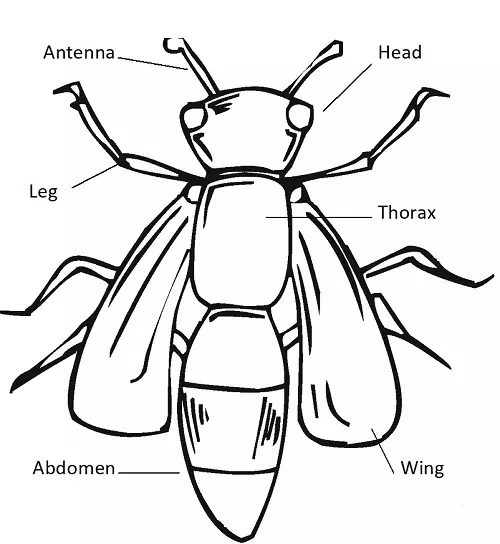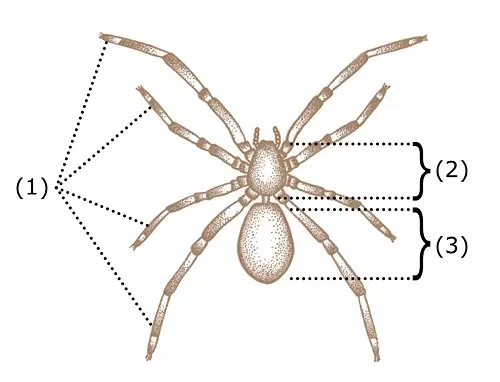- Invertebrates are animals without backbone.
- Animals with backbones are called vertebrates.
- Examples of invertebrates include insects such as a housefly, arachnids such as a spider, millipedes, and centipedes.




- Animals with backbones are called vertebrates.
- Examples of invertebrates include insects such as a housefly, arachnids such as a spider, millipedes, and centipedes.
Insects
Observe the picture below of an insect:
Parts of an Insect
Characteristics of Insects
- Insects have six legs (three pairs)
- Insects have three body parts (head, thorax and abdomen).
- Insects have compound eyes.
- Some insects like housefly have wings while others like ants have none.
- Insects have a pair of antennae on their head.
- Insects lay eggs.
- Insects include: ants, housefly, locusts, butterfly.
Arachnids
- Examples are ticks and spidersCharacteristics of Arachnids
- They have 8 legs, four pairs.
- They have a soft body.
- They do not have wings.
- They do not have antennae.
- They have their body divided into two: (Cephalothorax and Abdomen)

Parts of a Spider (Arachnid) - Image Courtesy of Wikipedia
1. Legs
2. Cephalothorax
3. Abdomen
1. Legs
2. Cephalothorax
3. Abdomen
Millipedes and centipedes
Characteristics of Millipedes and centipedes
- The following are some characteristics of millipedes and centipedes.- They have many legs.
- They have segmented bodies.
- They have antennae.
- They have hard outer cover.
- Millipedes have two pair of legs per segment.
- Centipedes have one pair of legs in a segment.

A Millipede

A Centipede - Image Courtesy of Texas A&M University
Note: Centipedes can bite and sting which can cause the skin to turn red due to their venom.
Importance of invertebrates to human beings
- Insects are used to pass pollen grains from one flower to another.
- Some insects such as bees provide honey which is food for human beings.
- Millipede and centipede are important in soil formation. They also help to aerate the soil.
- Insects such as silkworm produce silk used in making clothes



